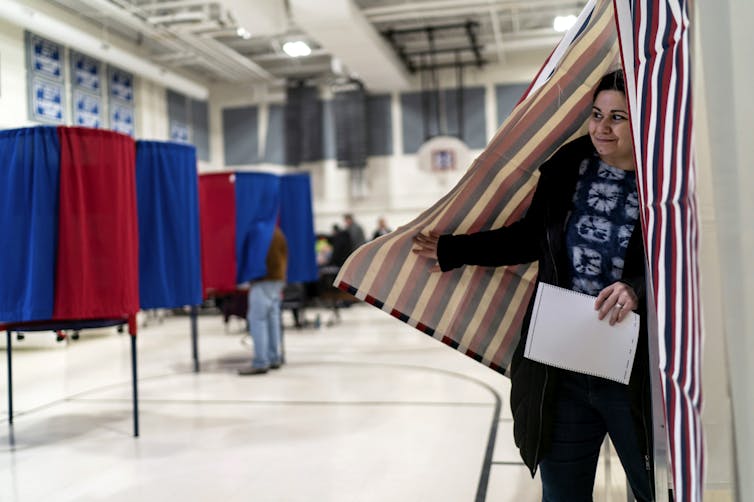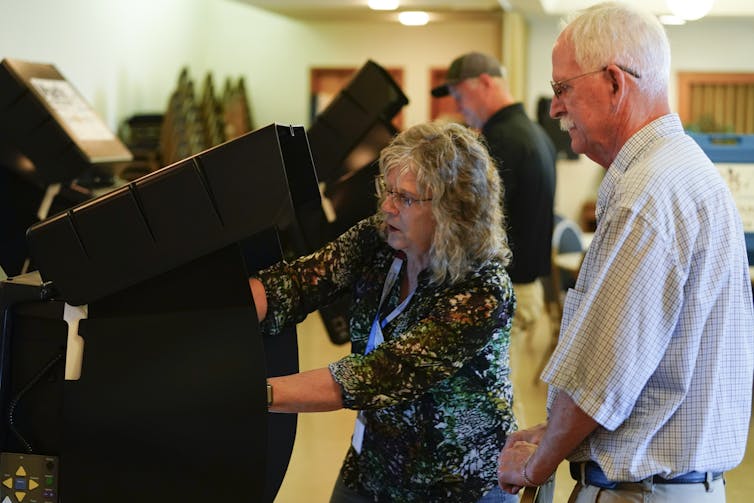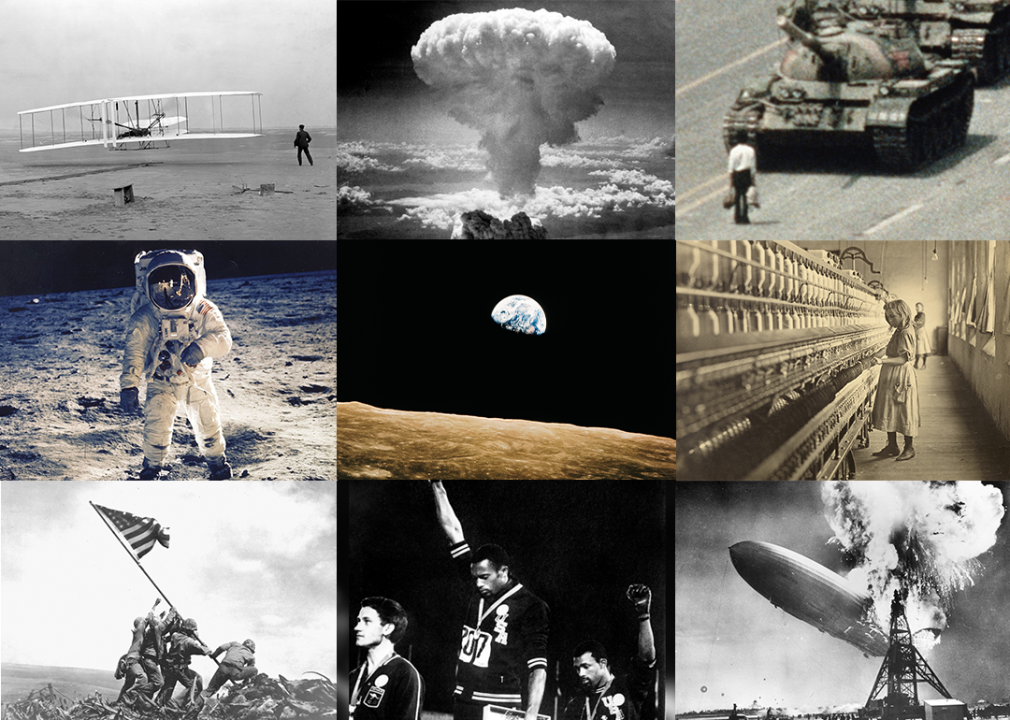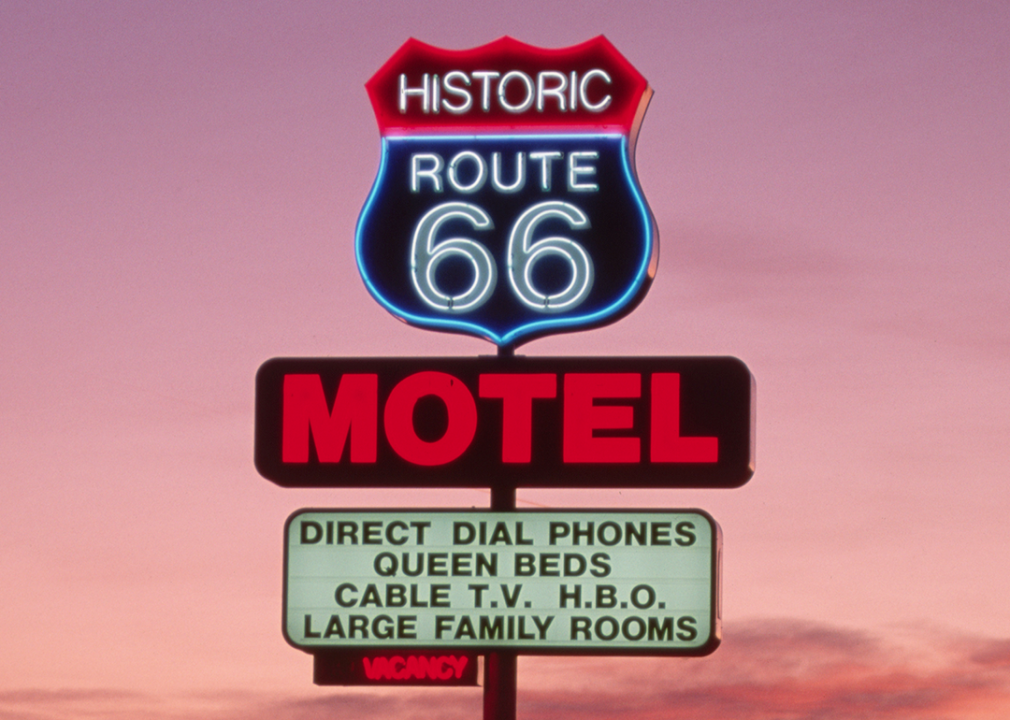
RoschetzkylstockPhoto // Canva
The best states for going solar in 2024
This year began with major wake-up calls about the environment: extreme cold weather linked to climate change, winter weather advisories in every single state, and nearly half of Americans at risk of dangerous cold and wind — all within the first two weeks.
More Americans are looking for ways to reduce their climate impact. Installing rooftop solar panels is one way to cut dependence on fossil fuels, which are burned to generate more than 60% of the country's electricity.
There are financial benefits, too: In every state, homeowners can potentially generate significant proportions of their electricity from a rooftop solar system. It does depend in part on the property itself, such as which way the roof is aligned or how much tree cover it has. Of course, it also depends on how much sun the area gets. And how much of a financial return you can expect will be influenced by the state's retail electricity market and local solar initiatives.
The ConsumerAffairs Research Team analyzed data from the National Renewable Energy Laboratory, Energy Information Administration, and the Database of State Incentives for Renewables & Efficiency, along with other sources, to determine which states are the best for solar energy. A breakdown of all the solar data for each state can be found below, as well as a full methodology for more details on how we calculated each state's Solar Score.
Key insights
- Hawaii tops our list of the best states to go solar, thanks to high retail electricity prices.
- While Indiana, Kentucky, Arkansas, Tennessee, and Alabama rank at the bottom of our list, federal solar incentives may still make it worthwhile for homeowners in these states to go solar.
- Arizona, New Mexico, and California have the highest potential for solar energy of all states, meaning solar energy falls more intensely on those states than elsewhere.
- Half of all states, plus Washington D.C., have no statewide programs that help homeowners afford rooftop solar installations.
Top five best states for going solar
Various factors help determine whether a state is a good place for homeowners to go solar with rooftop panels. Low installation costs and high retail energy prices can drive people to look for alternatives, and residents in states with more peak sunlight hours can produce more power with fewer panels. State laws and regulations can encourage people to go solar or discourage them.
We evaluated data in each of these categories and assigned points based on their relative importance to come up with each state's Solar Score. Along with the 50 states, we included Washington D.C., in our rankings.
1. Hawaii — Solar Score: 75.14 out of 100
High retail electricity prices are a key reason Hawaii is such a good place for people to install solar panels on their roofs. The potential savings are so clear that they more than make up for the state's limits on net metering eligibility and relatively low compensation rates for excess power generation. Through a program pairing rooftop solar with grid-connected batteries in customers' homes, Hawaii was able to shut down its last coal-fired power plant and replace the energy with solar power.
Hawaii has the nation's highest rate of existing rooftop solar capacity — far above that of California, which comes second in that category. The quick adoption rate has kept installation costs low — the 14th-lowest in the nation.
2. Nevada — Solar Score: 56.87 out of 100
Nevada is a pro-solar state in terms of both regulations and economics. As far back as 1997, the state allowed net metering for rooftop solar customers, but it dramatically cut back its payment rates and raised participation fees in 2015.
That didn't last long, though: In 2017, Nevada reinstated net metering under largely similar terms as before the 2015 changes. That long-term sustained support for solar energy has led to the state having more solar jobs per capita than any other.
The state is boosting rooftop solar in other ways, too. Consumer protection officials in Nevada are taking steps to protect customers who purchase residential rooftop solar systems against unscrupulous sales pitches, and a statewide nonprofit has applied for up to $250 million in federal Solar For All funding.
3. Delaware — Solar Score: 54.94 out of 100
Delaware has relatively low installation costs, reasonably competitive solar potential, and solar-friendly policies, including net metering and power purchase agreements. Its policies are also solar-friendly: In 2021, the state made it easier for people to support community solar projects. And in 2022, the state government launched a two-year program to give free solar panels to low-income homeowners.
But a major obstacle is in the technical details. One electric utility, the Delaware Electric Cooperative, which serves 20% of the state's residential customers, has blocked new rooftop solar installations from being connected to the electricity grid in large swaths of the state, saying its equipment can't handle any more incoming energy.
4. Arizona — Solar Score: 54.56 out of 100
Arizona has the highest average solar potential of any state and relatively low rooftop solar installation costs. It also has generally solar-friendly policies and a personal tax exemption to help defray the costs of installing rooftop solar systems. Along with legalized power purchase agreements, those circumstances have all helped make Arizona the state with the third-most rooftop solar capacity per capita in the country.
But some clouds may be on the horizon. In October 2023, the state's utility regulator, the Arizona Corporation Commission, reconsidered the rules under which homeowners are compensated for the excess electricity their solar panels generate. That's despite the fact that citizens, solar-industry companies, and even two of the three largest electric utilities in the state have supported keeping the existing rules in place. The process has not yet been completed.
5. California — Solar Score: 53.76 out of 100
California has relatively high retail electricity prices and great solar potential. Its rooftop solar rebate program has also been a factor in making California the state with the second-most rooftop solar installed per capita. The state has rules that prevent local or private restrictions on installing solar panels, as well as rules that protect homes from being shaded by neighbors.
But as with Arizona, the situation is shifting. New rules on how much credit homeowners can get for electricity produced on their roofs took effect in April 2023. Those changes have dramatically reduced the attractiveness of rooftop solar systems for homeowners and residents of multifamily and apartment dwellings. The solar installation industry projects that the current drop-off in installation numbers will continue. And in early January 2024, Gov. Gavin Newsom proposed cutting climate-related funding, including incentives for rooftop solar installations.
The five worst states for going solar
The places where going solar can be most challenging for homeowners are states that tend to have relatively low electricity costs and few existing installations. The states at the bottom of the list either ban or do not have clear rules about power purchase agreements, which can help homeowners reduce or even eliminate the cost of installing solar panels.
Going solar in these states can still be worth the money and effort — and can certainly have a positive impact on the environment — but homeowners may find themselves in an uphill battle as they make the switch to rooftop solar.
1. Indiana — Solar Score: 15.88 out of 100
Indiana has the highest rooftop solar installation costs, and its lack of statewide rebates to help offset those costs makes the economics of going solar less attractive in Indiana than any other state. Solar advocates call July 1, 2022, "the day Indiana rooftop solar died" because that's when the state's net metering policy expired. It was replaced by a system in which homeowners were paid much less for the excess power their rooftop panels produced. Solar installations in the state are down 67% since then, advocates say.
In late 2023, Indiana's electric utilities asked for a steep hike in residential electricity rates. Though regulators reduced the size of that increase, Hoosiers are still on track to see higher power bills in 2024.
2. Kentucky — Solar Score: 18.97 out of 100
The state government and several large cities in Kentucky see the opportunity for rooftop solar: They are all looking for funds from the federal Solar For All program. And in July 2023, a utility-scale rooftop solar array began operating on the roof of an Amazon warehouse at the Cincinnati/Northern Kentucky International Airport.
But Kentucky has no statewide programs to help residents pay the up-front costs of installing rooftop solar systems. It also bans power purchase agreements, which can be another way to cover those expenses.
3. Arkansas — Solar Score: 21.48 out of 100
With comparatively low residential electricity prices, no statewide aid to help cover installation costs and a ban on power purchase agreements, Arkansas's economic circumstances aren't positioned for residents to take advantage of the state's strong solar potential.
And conditions aren't getting better: Arkansas lawmakers in 2023 reduced the rate at which homeowners with rooftop solar panels will be compensated for the additional electricity their systems generate.
4. Tennessee — Solar Score: 23.33 out of 100
Tennesseans have some of the lowest electricity prices in the nation, which is no doubt part of the reason so few of them have rooftop solar systems installed already. With no state rebates or other programs and a low reimbursement rate for excess power generation, there are more barriers than opportunities for homeowners to put solar systems on their roofs.
There is some bright news: Under a new program negotiated with the Tennessee Valley Authority, some Nashville residents will become newly eligible to get credit for excess electricity generated from rooftop solar systems.
5. Alabama — Solar Score: 23.43 out of 100
Alabama's per-capita installed capacity of rooftop solar is the lowest in the nation, according to the Energy Information Administration data analyzed in this report. Part of that is no doubt due to high rooftop solar installation costs. Government policies aren't helping: The state outlaws power purchase agreements, does not protect properties from neighbors' shade, allows homeowners associations to ban solar panels, and only allows excess power to be purchased at wholesale rates, rather than at retail prices.
But it seems state officials and energy companies are interested in taking advantage of the state's high solar potential: They are exploring opportunities for large-scale solar projects.
See how your state stacks up
A breakdown of the factors used to calculate each state's Solar Score can be found here, showing how each state compares with others on residential electricity price, solar installation costs, solar potential and solar-friendly policies.
Going solar can be a good investment in any state. There's enough sunlight coming down everywhere in the U.S. to make rooftop-generated electricity cheaper, more reliable, and more climate-friendly than getting electricity from the grid. But navigating the maze of changing solar policies, incentives and costs can be complicated.
One particularly thorny solar policy, net metering, is being phased out in some states under pressure from utility companies that don't want to pay homeowners for the excess electricity they generate on their rooftops.
"As states develop successors to net metering, it's getting increasingly complicated," said Brian Lips, who manages the Database of State Incentives for Renewables & Efficiency. State incentives for rooftop solar typically get lower and less available over time, he observed.
Federal incentives can also help encourage the switch to solar rooftops, but they, too, are changing quickly. Homeowners who install rooftop solar systems between now and the end of 2032 can claim a federal income tax credit of 30% of the system's cost. And recent federal laws have allocated $7 billion in funding for the Solar For All program to help pay for residential solar installs in disadvantaged communities. The funds will be distributed starting in late 2024.
Installing solar panels is a common way for homeowners to generate clean energy, but it isn't the only way. Some people buy solar-only electricity, or solar power along with a combination of other renewable sources through their existing power companies, third-party electricity providers or community solar projects.
The bottom line is this: There are lots of ways and plenty of reasons to go solar, but staying updated on the most recent solar regulations, policies and incentives can help you make the most of your green energy transition.
Methodology
The ranking incorporates data on state electricity prices, installation costs, potential solar energy, existing solar capacity, and solar policies.
However, ConsmerAffairs did not factor in the cost of buying and installing a solar storage battery, which is a common add-on that allows residents to store extra energy the panels generate for use at night or during power outages.
Each state's Solar Score could reach a maximum of 100 points, with points assigned by the categories below.
Retail prices of residential electricity: 0 to 25 points
States' average retail prices of residential electricity for October 2023, according to the Energy Information Administration, were scored based on how close they were to the highest state's price. High retail electricity prices encourage people to seek other sources of energy.
Per-watt installation costs: 0 to 20 points
States' average per-watt installation costs for residential rooftop solar, according to SolarReviews.com and EnergySage.com, were scored based on how close they were to the lowest state's price. Low installation costs reduce a barrier to installing rooftop solar. The data was collected by ConsumerAffairs in January 2024.
Potential solar energy: 0 to 10 points
States' average potential solar energy capture in kilowatt-hours per square meter per day were calculated based on annual average Global Horizontal Irradiance data from the National Renewable Energy Laboratory Solar potential as of 2018, averaged across each state's area according to the U.S. Census Bureau's Topologically Integrated Geographic Encoding and Referencing system. States' averages were scored based on how close they were to the highest state's average. Higher potential solar energy makes more energy available to capture from a given rooftop area. (In Alaska, NREL only measures solar potential in the southernmost parts of the state.)
Existing residential solar capacity: 0 to 5 points
States' existing residential solar capacity per capita was calculated based on the Energy Information Administration's October 2023 estimates, except in Alabama, where the most recently available data was from the EIA's 2022 data for December 2022 — and on the U.S. Census Bureau's 2023 population data for each state. States were scored based on how close they were to the highest state's per-capita installed capacity. This information indicates where consumers have found policies, market forces, and other factors favorable for rooftop solar in the past.
Financial programs: 0 to 15 points
States' rebates, grants, loans, tax credits, and deductions were determined from the Database of State Incentives for Renewables & Efficiency (DSIRE) maintained by the North Carolina Clean Energy Technology Center. States got 3 points for each type of program, of which there were five. (A sixth type mentioned by DSIRE, a personal tax exemption, is not in place in any state.) These programs reduce the upfront cost of installing rooftop solar systems. DSIRE data was updated in November and December 2023.
Residential power purchase agreements: -10 to 10 points
States' laws and rules on residential power purchase agreements were determined from DSIRE data from November 2023. States got 10 points for allowing them and lost 10 points for banning them. States whose policies DSIRE had not identified or evaluated were given 0 points. These agreements can reduce or eliminate homeowners' up-front costs of installing rooftop solar systems.
Net metering: 0 to 10 points
States' laws and rules on net metering were determined from DSIRE data from November 2023. States with no rules got 0 points. States that required at least some utilities to use net metering got 10 points. States that required at least some utilities to use other methods to compensate customers for the energy their panels produced got 3 points. States whose regulations are in transition between net metering and other compensation got 7 points. These rules affect the amounts by which ongoing energy production can reduce homeowners' electricity bills.
Excess power payment rates: 0 to 3 points
States' laws and rules on excess power payment rates were determined from DSIRE data from November 2023. States that guaranteed payment at retail rates got 3 points. States that guaranteed payment at wholesale rates got 1 point. States that had a rate between retail and wholesale got 2 points. States that had no guaranteed rate got 0 points. These rules affect the amounts by which ongoing energy production can reduce homeowners' electricity bills or earn them additional money.
Solar access and solar easements: 0 to 2 points
States' laws on solar access and solar easements were determined from DSIRE data from November 2023. States that prevent local or private restrictions on installations of solar panels — called solar access laws — got 1 point. States that allow homeowners to seek protections of their property from being shaded by neighboring property — called solar easements — got 1 point. States that have both provisions got 2 points. States with neither got 0 points
This story was produced by ConsumerAffairs and reviewed and distributed by Stacker Media.





